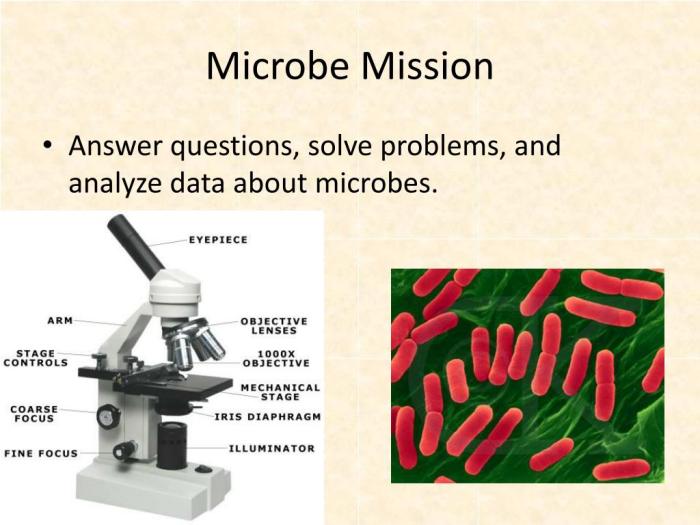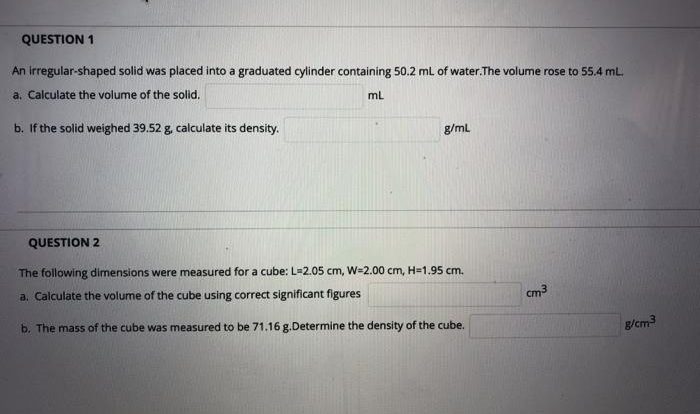Unveiling the secrets of the microbial world, the Microbe Mission Science Olympiad Cheat Sheet equips aspiring scientists with an arsenal of knowledge to conquer this captivating competition. Dive into the depths of microbial diversity, unravel the intricacies of microbial interactions, and master the principles of microbial ecology, pathogenesis, biotechnology, evolution, genomics, and education.
From the fundamental understanding of microbial diversity’s impact on ecosystems to the cutting-edge applications of microbial biotechnology in solving global challenges, this cheat sheet provides a comprehensive guide to excel in the Science Olympiad and beyond.
Microbial Diversity
Microbial diversity encompasses the vast array of microbial life forms found in different environments, from extreme habitats like hydrothermal vents to the human microbiome. This diversity plays a crucial role in ecosystem functioning and can be used as an indicator of environmental health.
Impact on Ecosystem Functioning
- Microbial communities decompose organic matter, recycling nutrients and supporting plant growth.
- They participate in nitrogen fixation, making nitrogen available to plants.
- Microbes produce antibiotics and other compounds that regulate microbial populations and influence ecosystem dynamics.
Assessing Environmental Health
- Changes in microbial diversity can indicate environmental disturbances, such as pollution or habitat loss.
- Monitoring microbial communities can help identify sources of contamination and assess the effectiveness of remediation efforts.
- By understanding microbial diversity, scientists can develop strategies to protect and restore ecosystems.
Microbial Interactions
Microbial interactions shape microbial communities and influence ecosystem dynamics. These interactions include competition, cooperation, and symbiosis.
Types of Microbial Interactions, Microbe mission science olympiad cheat sheet
- Competition:Microbes compete for resources such as nutrients and space.
- Cooperation:Microbes form biofilms or engage in mutualistic relationships, benefiting from each other’s presence.
- Symbiosis:Close, long-term relationships between different microbial species, often involving mutual benefits.
Applications in Biotechnology and Medicine
- Microbial competition is exploited in antibiotic discovery to identify microorganisms that produce compounds that inhibit or kill other microbes.
- Cooperative interactions are utilized in probiotics and prebiotics to enhance human health.
- Symbiotic relationships between microbes and plants are harnessed in agriculture to improve crop yields and resistance to pests.
Microbial Ecology
Microbial ecology studies the interactions between microbes and their environment, influencing ecosystem dynamics and human health.
Factors Influencing Microbial Communities
- Environmental factors: Temperature, pH, nutrient availability, and oxygen levels.
- Host factors: For microbes living in association with other organisms, such as the human microbiome.
- Microbial interactions: Competition, cooperation, and symbiosis.
Applications in Environmental Management
- Microbial bioremediation: Using microbes to clean up environmental pollutants.
- Wastewater treatment: Microbial communities in wastewater treatment plants break down organic matter and remove pathogens.
- Soil remediation: Microbes can be used to restore degraded soils and enhance plant growth.
Microbial Pathogenesis
Microbes can cause disease in humans through various mechanisms, including the production of toxins, invasion of host tissues, and disruption of immune responses.
Mechanisms of Microbial Pathogenesis
- Toxin production:Some microbes produce toxins that damage host cells and tissues.
- Invasion of host tissues:Microbes can invade and replicate within host cells or tissues, causing damage and inflammation.
- Disruption of immune responses:Microbes can evade or suppress the host’s immune system, allowing them to establish and spread infection.
Types of Microbial Pathogens
- Bacteria:Examples include Salmonella, Escherichia coli, and Staphylococcus aureus.
- Viruses:Examples include influenza virus, HIV, and Ebola virus.
- Fungi:Examples include Candida albicansand Aspergillus fumigatus.
Microbial Biotechnology
Microbes are used in a wide range of biotechnological applications, including biofuel production, waste treatment, and food processing.
Applications in Biotechnology
- Biofuel production:Microbes can ferment sugars and other organic compounds to produce biofuels, such as ethanol and biodiesel.
- Waste treatment:Microbes can break down organic matter in wastewater and industrial waste, reducing pollution.
- Food processing:Microbes are used in the production of fermented foods, such as yogurt, cheese, and beer.
Challenges and Ethical Considerations
- Safety:Ensuring the safety of genetically modified microbes used in biotechnology.
- Environmental impact:Monitoring the potential ecological consequences of releasing engineered microbes into the environment.
- Equity:Ensuring that the benefits of microbial biotechnology are shared equitably.
Microbial Evolution: Microbe Mission Science Olympiad Cheat Sheet
Microbes have a long and complex evolutionary history, playing a significant role in the evolution of life on Earth.
Mechanisms of Microbial Evolution
- Mutation:Random changes in the DNA of microbes.
- Natural selection:The survival and reproduction of microbes with advantageous traits.
- Genetic recombination:The exchange of genetic material between microbes.
Applications in Understanding Life’s Origins and Antibiotic Resistance
- Origins of life:Studying microbial evolution can provide insights into the early evolution of life on Earth.
- Antibiotic resistance:Understanding microbial evolution is crucial for developing strategies to combat the growing problem of antibiotic resistance.
Microbial Genomics

Microbial genomics involves the study of microbial genomes, providing valuable insights into microbial diversity, evolution, and pathogenesis.
Importance of Microbial Genomics
- Understanding microbial diversity:Microbial genomics can identify and characterize new microbial species.
- Studying microbial evolution:Comparing microbial genomes can reveal evolutionary relationships and adaptation mechanisms.
- Developing new antibiotics and vaccines:Microbial genomics can identify potential targets for the development of new antimicrobial agents.
Methods for Microbial Genome Sequencing and Analysis
- DNA sequencing:Determining the sequence of nucleotides in a microbial genome.
- Bioinformatics:Using computational tools to analyze and interpret microbial genome data.
Microbial Education

Microbial education is crucial for promoting public health and environmental stewardship.
Importance of Microbial Education
- Public health:Educating the public about microbes can help prevent the spread of infectious diseases and promote healthy behaviors.
- Environmental stewardship:Understanding the role of microbes in ecosystems can encourage responsible environmental practices.
- Inspiring future scientists:Engaging students in microbial education can foster interest in science and inspire future researchers.
Teaching Methods for Microbial Education
- Hands-on activities:Experiments and laboratory exercises that allow students to observe and interact with microbes.
- Games and simulations:Interactive activities that make microbial concepts fun and accessible.
- Real-world applications:Connecting microbial education to real-world examples, such as disease prevention and environmental protection.
Key Questions Answered
What is the significance of microbial diversity?
Microbial diversity plays a crucial role in maintaining ecosystem balance, nutrient cycling, and decomposition processes, ensuring the overall health and stability of various environments.
How do microbial interactions shape microbial communities?
Microbial interactions, such as competition, cooperation, and symbiosis, influence the composition, structure, and function of microbial communities, shaping their ecological roles and contributing to ecosystem dynamics.
What are the practical applications of microbial biotechnology?
Microbial biotechnology harnesses the power of microbes for diverse applications, including biofuel production, waste treatment, food processing, and the development of antibiotics and vaccines, offering sustainable solutions to global challenges.
How does microbial evolution contribute to our understanding of life’s origins?
Studying microbial evolution provides insights into the earliest forms of life on Earth, shedding light on the mechanisms of genetic variation, natural selection, and the emergence of complex organisms.
Why is microbial education essential for public health and environmental stewardship?
Microbial education empowers individuals with the knowledge and skills to make informed decisions about microbial-related issues, promoting public health, preventing the spread of infectious diseases, and fostering responsible environmental practices.



